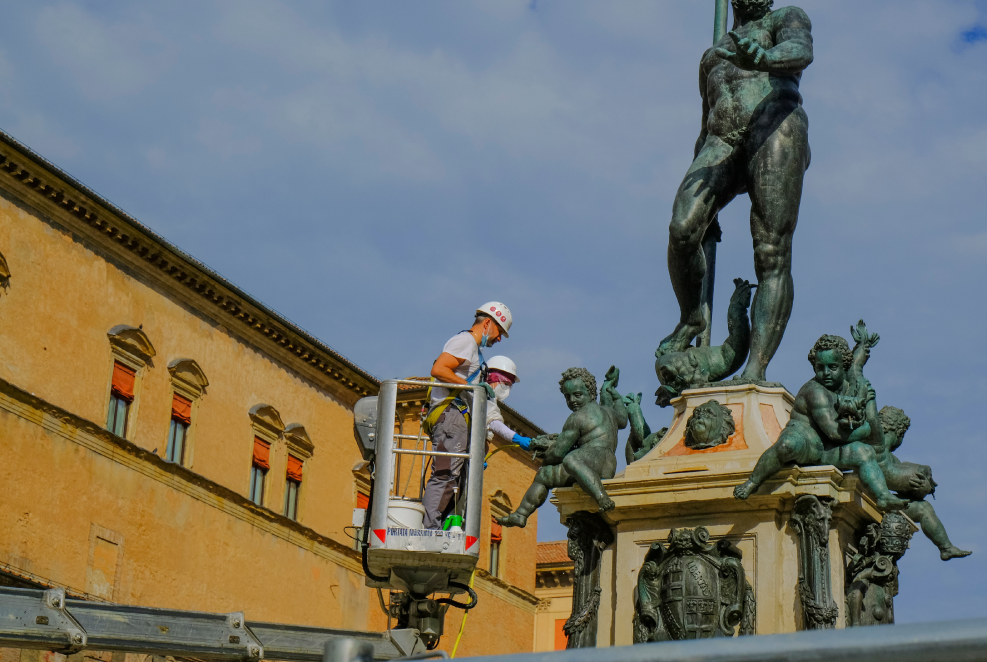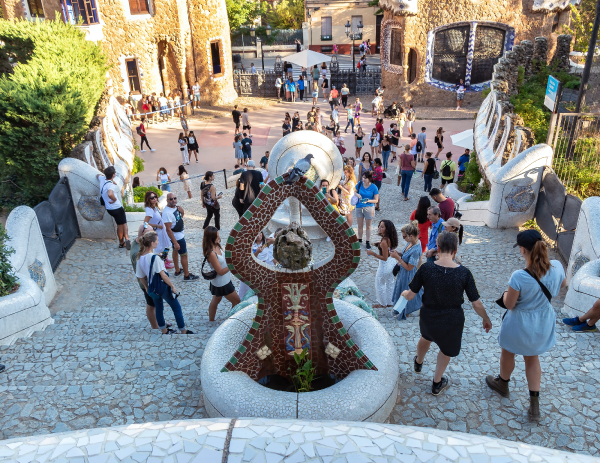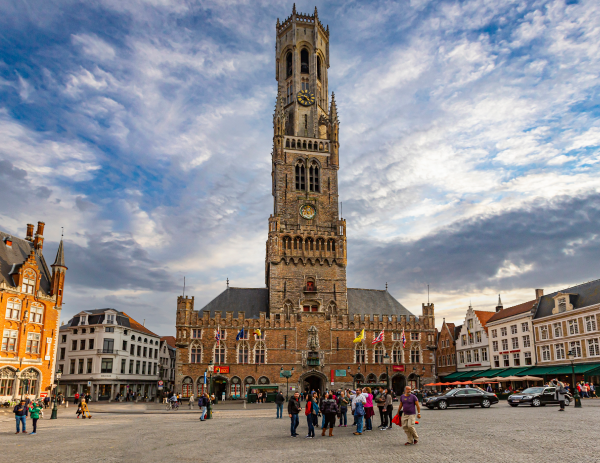To access the other concept sheets in the Heritage Cities unit, check out the See Also section.
In geography, an issue is a problem related to the use or the planning and development of a territory. An issue can be environmental, economic, political, social, etc.
Cause
The heritage site is visited by many people, which leads to an increase in car traffic.
Problem
The high number of cars and other gas-powered vehicles create a lot of pollution.
Consequence
The heritage site’s buildings and monuments are damaged by the atmospheric (air) pollution and the acid rain caused by the traffic.
Over time, pollution can erode the writing on tombstones and leave black stains on statues and buildings.
Solution
To reduce pollution, one option is to limit the number of vehicles in the heritage site. Creating parking spaces around the site, using electric transportation while on site and restricting avenues to foot traffic are three possible solutions for preventing pollution.
The buildings and monuments affected by the pollution can also be cleaned. However, this is expensive and once damaged, it can be very difficult to repair and restore them to their original appearance.

Workers cleaning a monument in Italy.
Source: Kate Krav-Rude, Shutterstock.com
Causes
Too many people at a time on a heritage site and/or inadequate protection of the site.
Problem
Tourists and even residents of heritage sites paint graffiti, steal objects or destroy part of the site.
Consequences
Vandalism damages the heritage site and threatens its conservation.
Solutions
One solution is to raise visitors’ awareness of the heritage site. By better understanding the issues related to the site, people will be more likely to act to protect rather than damage it.
Another solution is to ensure adequate surveillance of the heritage site and to put in place measures to prevent damage related to vandalism (install security cameras or protective glass, for example).
Pompei has been on UNESCO’s World Heritage List since 1997. It is a popular site among tourists from around the world, and receives thousands of visitors each year. One of the threats to this site is the theft of artifacts, such as the fresco depicting the goddess Artemis, in 2014.
To find out more, check out the article, Thieves Pinch Fresco From Historic Pompeii Wall.
Cause
Certain heritage sites are popular destinations and are visited by a large number of tourists each year.

In 2019, more than 19 million people visited the city of Barcelona, in Spain[1]. Park Guëll is the best known park in the city and attracts many tourists.
Source: agsaz, Shutterstock.com
Problems
A lot of people visit heritage sites at the same time. A great deal of planning and development is required to welcome these tourists.
Consequences
Mass tourism has many consequences:
-
The high number of visitors accelerates the wear and tear on the site.
-
For cities with inhabited sites, tourism also has a negative impact on the quality of life of the residents due to all the traffic and the planning and development required to welcome tourists. And since tourists’ and residents’ needs are different, residents tend to gradually move away from the heritage site if planning and development does not reflect their needs. Once the residents have left, the heritage site becomes a tourist site only.
-
If residents move away from a heritage site, there is a serious risk that certain buildings will be left empty and poorly maintained. This phenomenon contributes to a more rapid deterioration of the heritage site.
Solutions
Limit the number of tourists by, among other things, setting a maximum on the number of people who can visit the heritage site at a time, which will slow the wear and tear of the site. Sometimes the site needs to be closed to allow for maintenance and conservation work.
The planning and development of a heritage site is a key element. It must respond not only to the needs of tourists, but to those of residents as well (in the case of inhabited sites).
Some buildings can be converted into housing for residents or restaurants for tourists.
When a site is on UNESCO’s World Heritage List, the heritage city will attract more tourists.
Advantage: The presence of tourists stimulates the city’s economy and increases its revenue.
Disadvantage: Too many tourists causes damage to the heritage site.
Sites included on the World Heritage List have access to additional resources, especially money, to help conserve the heritage site. When a heritage site is located in a developing country, it can receive more help to compensate for the country’s lack of financial resources.
UNESCO imposes certain constraints to help conserve heritage sites. These include:
-
The obligation to conduct archeological digs prior to building on a site (a road or a new building, for example) to determine what is underground and protect it if necessary
-
The obligation to conserve the appearance, materials and historical character of the building when renovating it
The constraints and support that come with being included on the World Heritage List are very beneficial, however, conservation of these heritage sites can still prove difficult.
An example is the historic centre of Bruges, in Belgium. Any new construction on this site must have the same architectural style as the buildings around it to keep a coherent look. This involves the choice of materials, the shape of the roof and windows, the height of the building, etc.

Bruges was a very important commercial city in the Middle Ages. Many elements of that period can still be observed today.
Source: Kadagan, Shutterstock.com
UNESCO manages several heritage lists, including one for heritage sites that are in danger. These sites are at risk of serious deterioration or of disappearing altogether. UNESCO created this list to highlight the risk to these sites so that, ideally, they can be better conserved and can receive more assistance to protect them. In 2021, there were 36 cultural heritage sites on the List of World Heritage in Danger[2].
The dangers that threaten these heritage sites include natural hazards or human conflict such as wars.
If a heritage site becomes too damaged or is destroyed, it can be removed from the UNESCO lists.
The Dresden Elbe Valley, in Germany, is an example of this. The site was included on the World Heritage List in 2004. UNESCO recognized the exceptional elements of the site, including the archeological elements built between the 16th and 20th centuries. However, in 2009, the site was removed from the List following the construction of a four-lane bridge which, according to UNESCO, took away the characteristics that had qualified the site for the List in the first place.

Source: Lingnerschloss Stadtblick mit Waldschlößchenbrücke [Photograph], Bybbisch94, 2014, Wikimedia Commons, (URL). CC BY 4.0[3]
To access the rest of the unit, you can consult the following concept sheets.
1. Observatori del Turisme a Barcelona. (2019). Informe de l’activitat turistica. https://www.observatoriturisme.barcelona/sites/default/files/IAT19.pdf
2. UNESCO. (2022). Liste du patrimoine mondial en péril. https://whc.unesco.org/fr/peril/
3. Bybbisch94. (2014, 8 novembre). Dresden 2014, Lingnerschloss Stadtblick mit Waldschlößchenbrücke [Photographie]. Wikimedia Commons. https://commons.wikimedia.org/wiki/File:Dresden_2014,_Lingnerschloss_Stadtblick_02.JPG. CC BY 4.0